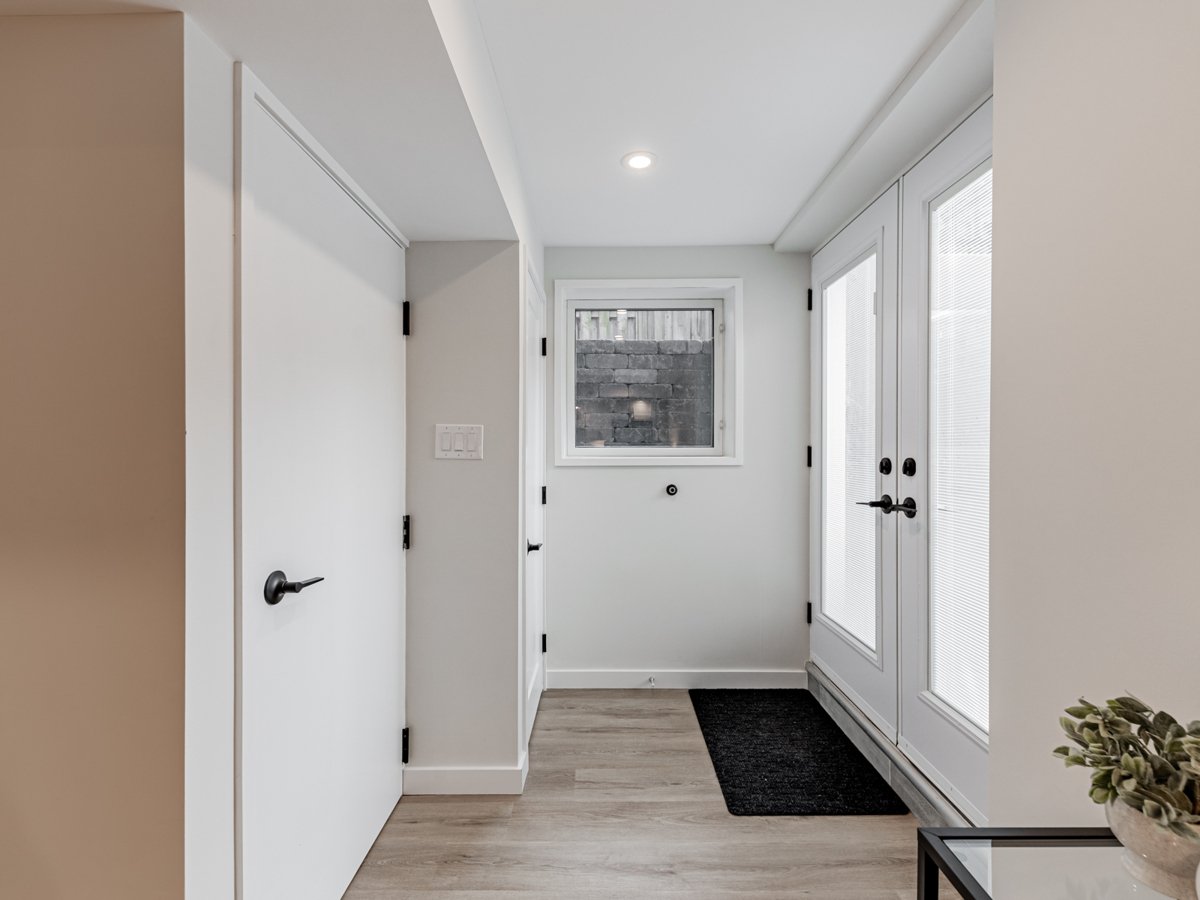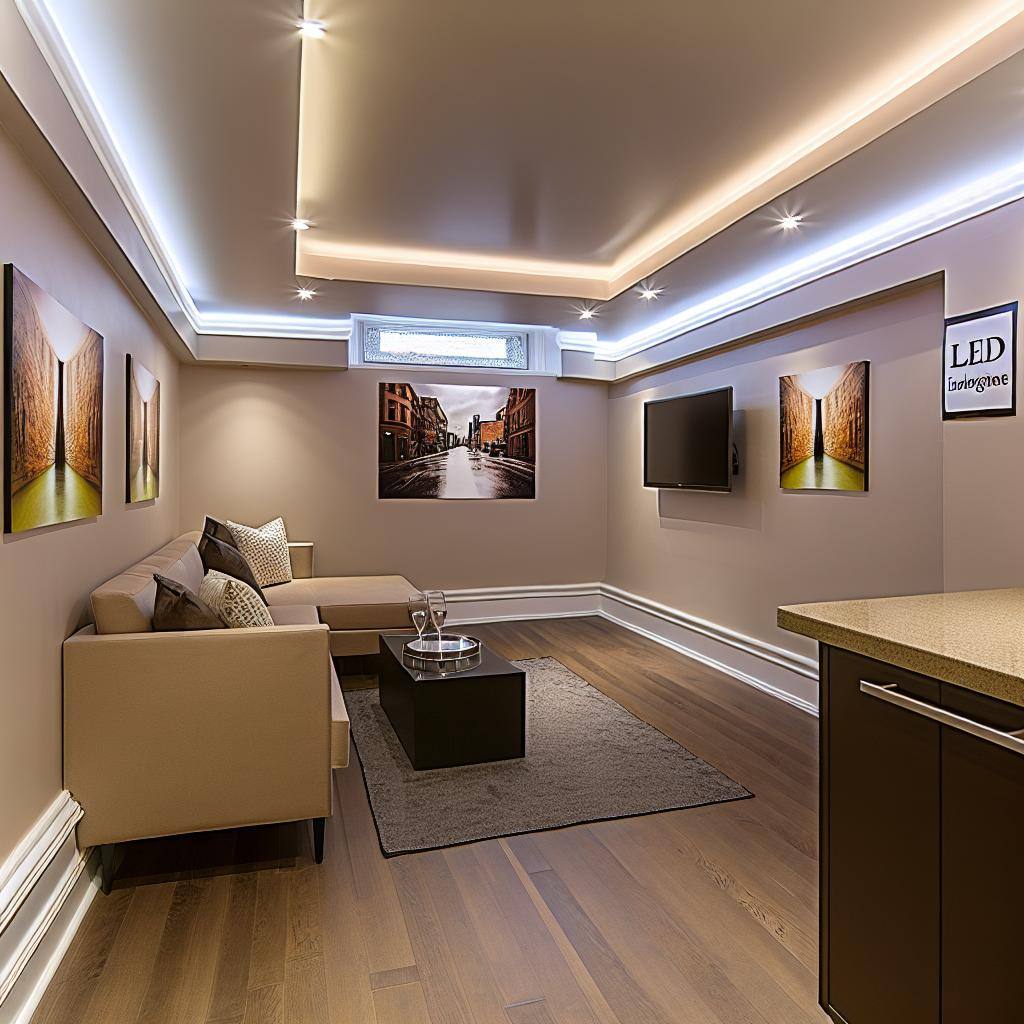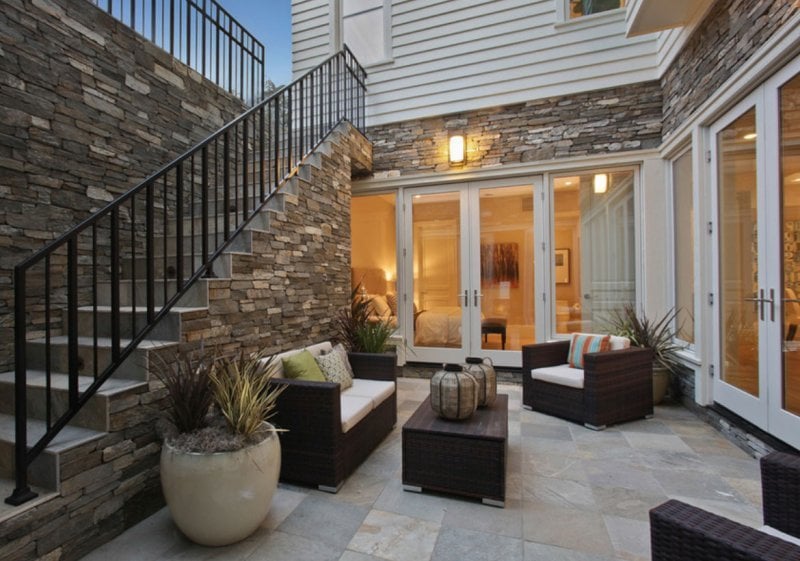The Ultimate Guide to Basement Renovations in Toronto
Table of Contents

Adding a separate entrance to your basement can significantly enhance the functionality and value of your home. Whether you're creating a rental unit, improving accessibility, or simply looking for an alternative entry point, a basement separate entrance offers various benefits. This guide will walk you through the key factors to consider, including costs, permits, and installation requirements.
Building Code and Building Permit Requirements for a Basement Separate Entrance
Before installing a separate entrance to your basement, it’s crucial to understand local building code requirements. These regulations are in place to ensure safety and structural integrity.
Minimum Dimensions and Accessibility Standards
The entrance must be large enough to allow safe passage. Most building codes require doorways to be at least 36 inches wide. Additionally, there must be adequate headroom above the entrance, usually at least 6 feet 8 inches.
Safety and Fire Code Considerations
A basement separate entrance should not only be functional but also safe. This includes meeting fire code requirements, such as having an egress window if the basement is used as a living space or bedroom. Proper lighting and ventilation are also important.
Local Permit and Zoning Regulations
In cities like Toronto, adding a separate entrance to a basement will likely require a permit. The separate entrance to basement permit process involves submitting plans to your local building department for approval. Ensuring your project complies with local zoning laws and setbacks from property lines is also important.
Table of Contents
Challenges and Considerations When Adding a Separate Entrance
Legal and Permit Considerations for a Basement Separate Entrance
There are several options for creating a basement separate entrance, depending on the layout of your home and the intended use of the basement.
Walk-out basements have a ground-level door that leads directly outside. This type of entrance is ideal for properties with a natural slope and offers the easiest access.
A below-grade entrance with stairs leading down to the basement is a popular choice for homes without a walk-out basement. This design often requires excavation and a window well.
Side entrances provide access to the basement from the side of the house. This type of entrance is common in urban areas with limited space, making it a practical option for many homeowners.
Adding a separate entrance to the basement typically involves several stages, from planning to installation.
Consult with a basement separate entrance contractor to discuss your needs and design options. Then, plan the location and layout, considering factors like drainage and ease of access.
For below-grade entrances, excavation is required to create space for the stairs and doorway. Modifying the foundation may also be necessary to accommodate the new entrance.
Install the door and frame, ensuring they are properly sealed to prevent water infiltration. Choose a door that is durable and weather-resistant.
Add stairs and railings, and ensure proper drainage to prevent water from pooling near the entrance. Waterproofing is especially important for below-grade entrances to avoid basement flooding.
The cost of a separate entrance to the basement varies depending on factors such as location, design, and the complexity of the project.
Adding a basement separate entrance offers numerous advantages, making it a worthwhile investment for many homeowners.
One of the main reasons for adding a separate entrance is to create a house for sale with a separate basement entrance or to rent out the basement as an apartment. This can generate additional income and potentially offset mortgage costs.
A separate entrance makes the basement more accessible, especially for multi-generational households or guests. It also allows for easier access to storage or recreational areas.
A house with a separate basement entrance for sale may attract more buyers due to its added functionality and rental potential, increasing the overall property value.
While a basement separate entrance provides benefits, there are also challenges to address during the planning and installation process.
Waterproofing is crucial to prevent water from seeping into the basement. Installing drainage systems, such as French drains or sump pumps, can help mitigate water-related issues.
Adding an entrance may involve making significant structural changes to the foundation, which should be done under the guidance of a professional contractor.
Consider adding privacy measures, such as fences or landscaping, to separate the entrance from the main house. Installing security features like outdoor lighting and cameras can also enhance safety.
Understanding the legal requirements is essential to ensure that your project complies with local regulations.
A permit is typically required for any structural modification to a home, including adding a basement separate entrance. Check with your local building department for specific requirements and fees.
After the installation is complete, the entrance may need to be inspected by local authorities to ensure it meets all safety and building code requirements.
Do I need a permit to add a separate entrance to my basement?
Yes, most jurisdictions require a permit for structural changes, including adding a separate entrance.
How much does it cost to install a basement entrance?
Costs vary, but a typical project can range from $7,000 to $20,000, depending on the design and location.
If I add a separate entrance, can I turn my basement into a rental unit?
Yes, a separate entrance is a key requirement for legal basement apartments. Additional requirements may apply.
What are the waterproofing requirements for a below-grade entrance?
Proper drainage and waterproofing are essential to prevent water infiltration, including the use of drains, sump pumps, and waterproof membranes.
Is a basement separate entrance worth the investment?
Yes, it can increase your home's value, improve accessibility, and provide an opportunity for rental income.
A basement separate entrance can transform your home by providing additional access, creating rental opportunities, and boosting property value. By understanding the requirements, costs, and benefits, you can make an informed decision about whether this investment is right for your home. Consult with a professional contractor and follow local regulations to ensure a successful project.

Table of Contents

Why Consider a Basement Renovation? A basement renovation is one of the most effective ways to increase your home’s living space and boost its value....

Adding a separate entrance to your basement can significantly boost your home’s functionality and value. Whether you're creating a rental unit,...